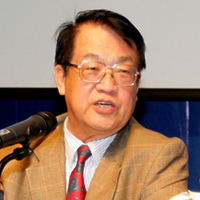Since the once-in-a-lifetime global financial crisis buffeted the US and Europe in 2008, the global economic landscape has gone through significant changes. Emerging economies rapidly increased as a proportion of global GDP. According to data released on June 23, 2015 by the Intelligent Unit of the Economist magazine, with an economic aggregate of G7 countries of $3.6 trillion,G7 countries share as a proportion to global GDP has declined from 65% to 46.6% compared to 10 years ago. In the meanwhile, for BRICS countries, their share of the global economy has risen from 8% to 22.12% within 10 years, standing at $17.1 trillion. Against this backdrop, the US and Europe expanded the G7 mechanism to G20, where major decisions on world economy would be made. More importantly, accounting for 80% of global GDP, the G20 is more representative in that it gave more voice to developing countries, and hence has a profound impact on global economic development.

Since Nov, 15, 2008, the G20 has been elevated from the ministerial level to the heads of government level. In the past eight years, the G20 has not set up a permanent office, such as a secretariat, which could be tasked with providing counsel and service to the heads of state and government of G20, and disclose information regularly to grow the influence of the G20.
The G20 convenes meetings galore, yet some conspicuously lack substance. APEC has the dubious distinction of being a “tea house”, a term used by a senior US official to dismiss the meetings as no more than high talks and showcase of traditional clothes, while any substantive agreement is absent. The only saving grace is it provides an informal setting for leaders to converse and communicate.
On a positive note, international financial institutions have made some reforms. On April 25, 2015, the World Bank Board of Directors announced the adoption of a voting power reform proposal. Under the reformed power allocation, the top 5 are: US (15.85%), Japan (6.84%), China (4.42%, from 2.77%, thus ranking 3rd from its previous 6th place), Germany (4.0%), UK and France (each accounting for 3.75%). On Jan. 27, 2016, the IMF announced the quota share reform package adopted in 2010 would come into effect, under which China, formerly ranked 6th, has become the third largest shareholder, with its quota shares risen to 6.394% from 3.996%. China, Brazil, India and Russia now all rank among the top 10 shareholders. The BRICS countries account for 14.7% of the voting power, short of the 15% needed to excercise a veto.
The proposed reforms in the two institutions are vital, both passed in 2010, but regrettably delayed by the US Congress for five years when they were up for adoption in 2011. In the span of five years, a sea change has occurred. Just take China and Japan for example. In 2010, China’s GDP was $5.88 trillion, and Japan $5.46 trillion, leading China by a thin margin. But in 2014, China’s GDP topped $10.38 trillion, accounting for 13.43% of the global economy. Japan’s GDP hovered around $4.61 trillion, or 5.97% of the global total. That means Japan’s GDP is equivalent to 44.41% (less than half) of China’s GDP. But Japan still wields way more voting powers in international financial institutions than China. Furthermore, the quota review at the World Bank and the IMF has a five-year gap between adoption and implementation, as the reform implemented in 2015 was actually adopted in 2010, when the circumstances may have outgrown the reform proposal itself. At the 2016 G20, China could rally the other BRICS countries to embark on a new round of quota reforms to elevate the role of the group in global economic reform and management, with 2017 as the timeline for adoption and 2018 for implementation. If China could be catapulted to be the second-biggest shareholder in both World Bank and the IMF, it will correspond to China’s economic standing in the world.
The global world trade system is undergoing reforms. The GATT was established in 1947, with only 23 members, primarily drawn from Western countries, and earned the nickname of “club of developed and rich countries”. In 1995, the GATT was upgraded into the WTO, with its membership expanded to 162 by year end 2015 (34 developed members and 128 developing ones). Developing members account for 79% of WTO membership, turning the organization into a predominantly low-income country club, so to speak. As for the rules of decision making, every country has one vote, regardless of the size of its economy and trade. Decision making is based on consensus rather than democratic centralism. Consequently, any member can veto a proposal, leading to prolonged and inconclusive negotiations at WTO. A case in point happened in 2013, where the Doha Round trade facilitation agreement was on the verge of being blocked by a handful of small economies, were it not for the strenuous facilitation conducted by China. Though the trade facilitation bill and the IT product tariff reduction bill were passed, the Doha round remains stalled in spite of 15 years of on and off negotiations since 2001. It costs confidence and faith in the Doha round, compounded by vibrant regional trade integration, the combined effect of which threatens to crowd out the WTO as a relevant institution. A prominent development is the TPP and TTIP negotiations underway, which underscores the urgency of WTO reform if it is to stay relevant.
How should the WTO go about its reform? The author suggests an international trade council be set up, comprising countries who each account for at least 1% of global GDP, following the same principle governing the IMF’s SDR basket composition. When the SDR basket was first launched in 1969, 16 currencies were selected under the principle that each should account for at least 1% of settlement in global trade of goods and services.
According to statistics of the WTO, 26 countries and regions have goods export volume above 1% relative to the global total, with 11 in Asia, 10 in Europe, 2 in North America, and 1 in Oceania. The combined export volume of the 26 countries account for 78.6% of the global total. In the interest of regional representation, Africa should be represented by 2 countries (South Africa and Egypt or Nigeria), hence the council would be consisted of 28 countries (13 developed countries, and 15 developing countries), representing about 80% of the global export volume. On that score, this group of countries broadly match the economic aggregate of G20 countries, and at the same time give weight to developing countries. Under the WTO framework, any major trade issue could be first discussed within the 28-member council; when a general consensus is reached, the issue can be submitted to the rest membership of 134 countries for comments. Such a decision making mechanism will significantly energize the WTO institution and facilitate efforts to reach solutions and conclude agreements, so as to fulfill the mandate of the WTO and contribute to world economic growth. According to the latest data released on 7 April 2016, 28 countries and regions have goods export volume above 1% relative to the global total, with 12 in Asia, 11 in Europe, 2 in North America and Latin America, and 1 in Oceania. Among this group, 17 are developing countries, 13 developed ones, so the distribution is more balanced.
In the wake the 2008 financial crisis, Western countries resorted to money printing as part of accommodative monetary policies, known as “quantitative easing”, to catch a second breath to revive their economies. The Fed launched three rounds of QEs, including printing $3.963 trillion dollars during November 2008 and October 2014, and the issuance of $7.4 trillion in T-bonds, and the combined amount topped $11.4 trillion (In comparison, China’s GDP in 2015 was $7.4 trillion). Fed Chair Ben Benanke was criticized as giving out “helicopter money”. Along with the QEs, ultra-low interest rate was pursued by the Fed to kick start US economy.
The ECB has also embarked on QE. On 6 September 2012, the ECB announced the plan of unlimited bond purchase from EU member countries to lessen the pressure on heavily indebted members. As money will not come from thin air, the only solution is to start the printing machine and go on a printing spree.
Japan also joined the rank and launched super QE programs, and sent the Yyen shrinking by large margins.
On Oct. 29, 2014, the Fed announced an end to its QE policy, and raised its interest rate by 0.25% on Dec. 18, 2015, while its European and Japanese counterparts stay on the course of QE. In 2015, the ECB announced the adoption of a negative interest rate to revive the weak economy, followed by the BOJ in early 2016.
The US economy led the recovery among Western economies, partly due to the aggressive QE programs, but the credit should also go to a host of policies by the Obama administration to drive industrialization, job creation and structural restructuring, which are missing in the European countries and Japan. Money printing, low interest rates or even negative rates conspired to drive the economy to the ground in the long run, which explained the double-dip recession in the Euro zone, and the triple-dip in Japan, as the central banks have no more cards up their sleeves.
On Nov. 15, 2015, President XI Jinping said at the G20 summit that during the economic crises of the past century, misguided responses of the countries concerned made economic recovery more difficult. In the wake of the 2008 financial crisis, fiscal policies adopted by various countries worked to some degree to stabilize the market and turned the situation around. All in all, the crisis was more complex than previous ones, and the solution entails a mix of policies, which could not be accomplished overnight. On Nov. 18, President Xi Jinping said at the APEC summit that monetary stimulus alone cannot solve the economic problems faced by the world. It is imperative that structural reforms are pursued with more determination, to align the supply system with evolving demands. On Feb. 26, 2016, Premier Li Keqiang said that practices and experiences in the wake of the global financial crisis have shown that QE alone cannot address the structural barriers to growth, and may bring with it a negative spill-over effect. Therefore, the focus should be on pressing ahead with structural reforms. Different countries may pursue different policies, but the overall theme should be to provide support to innovation, liberalize controls, encourage competition, and expand market access in order to unleash the potentials of the economy.
The 2008 financial crisis has battered world economy, the most challenging issue is the lack effective demand, as has shown in the past few years. According to the WTO, global trade grew by 5.3% year on year from 1993 to 2013, but the rate has been lower than 3% for five years running from 2012 to 2016, a stark departure from the previous years. In 2015, global export volume was only $16.48 trillion, having shrunk 13.2% compared to $19 trillion in 2014.
On Nov. 10, 2015, President Xi Jinping set out the policy of supply-side reform at the 11th meeting of the central financial and economic leaders’ committee. On Jan. 5, 2016, President XI gave an elaborate explanation of the policy. The author believes supply-side reform is applicable to other countries as well, and the Chinese leadership could use the G20 summit in Hangzhou to make the case of the policy, and how it could contribute to rejuvenating the world economy and spur growth.
It is encouraging that the policy proposals of China are gaining traction among policymakers around the world. On April 20, 2016, Le Figaro, a French mainstream newspaper, quoted IMF Managing Director Christine Lagarde that the fragility in world economic growth resulted from the 2008 financial crisis, and some countries failed to handle the scars of the crisis adequately. In particular, bad loans piled up at commercial banks and still weighed on their balance sheets, which to some extent pose a drag on the implementation of monetary policy. That, among other reasons, led to the sluggishness in developed countries. While on fiscal policy and structural reforms, these countries are overcautious. As we see it, monetary policy alone cannot support robust economic growth.




